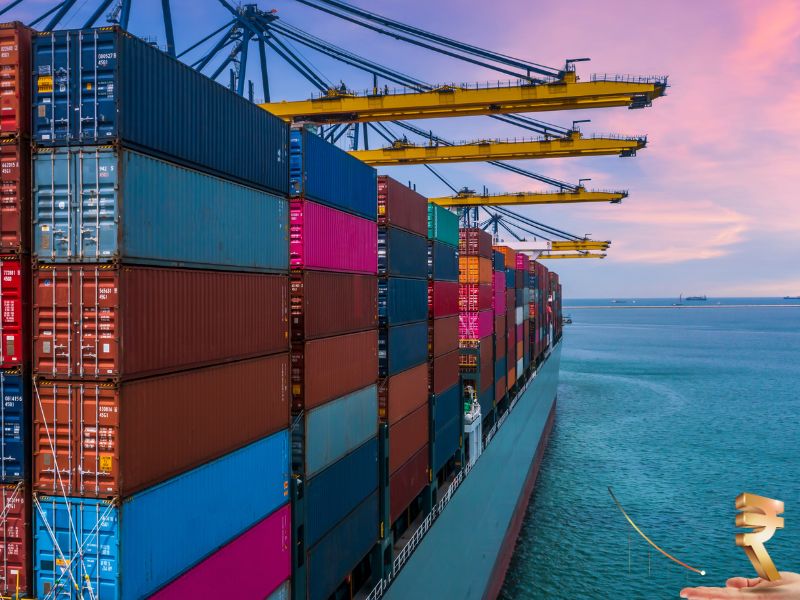.png)

Groupthink is the House View of BasisPoint’s in-house columnists.
February 18, 2025 at 1:25 PM IST
India’s merchandise trade deficit widened sharply in January, reflecting persistent weakness in exports. The deficit stood at $23 billion, up 39% from a year ago and 5% higher than December’s $21.93 billion. The primary driver was a contraction in exports, which fell for the third consecutive month, declining 2.4% to $36.43 billion. Imports, meanwhile, grew 10.3% to $59.42 billion despite a drop in crude oil imports.
The composition of exports suggests a fundamental shift in India’s trade dynamics. Petroleum product exports, traditionally a major contributor, collapsed 58.7% to $3.56 billion when compared with January last year. In contrast, engineering goods, India’s largest export category, grew 7.4% to $9.42 billion, while electronic goods surged 79.0% to $4.11 billion.
Gems and jewellery exports also rebounded last month, rising 16.0% to $3.00 billion.
The broader trend over April-January points to an economy struggling to sustain export momentum in its traditional strengths. While electronic goods (up 33.7% to $30.22 billion), engineering goods (up 9.8% to $96.75 billion), and pharmaceuticals (up 7.8% to $24.30 billion) held up, traditional exports such as gems and jewellery (down 9.3% to $24.38 billion), iron ore (down 48.9% to $1.65 billion), and petroleum products (down 24.8% to $53.07 billion) declined.
Imports tell a different story. The overall 10.3% rise in January was led by a sharp increase in gold and silver imports, which surged 49.3%. Electronic goods imports rose 17.8% to $9.36 billion, while machinery imports increased 27.8% to $4.73 billion.
Despite the decline in crude and petroleum product imports, which fell 13.5% to $13.43 billion, the increasing demand for precious metals is concerning. In April-January, imports of gold and silver rose 32.8% to $54.13 billion, pushing their share in total imports up to 9.0% from 7.3% a year ago. This signals both strong consumer demand and the financialisation of gold, raising questions about capital allocation in the economy.
The rising trade imbalance with China is another red flag. China remains India’s largest import partner, shipping goods worth $95.01 billion in April-January and accounting for nearly 16% of total imports. More worryingly, the trade gap has widened further, with India’s deficit with China reaching $83.53 billion in April-January compared with $72.42 billion a year ago. This means that China now accounts for more than one-third of India’s total trade deficit, reinforcing concerns about dependence on Chinese imports despite official efforts to diversify supply chains.
India’s trade numbers reflect a deeper structural issue. The global slowdown in demand, coupled with supply-side constraints, is weighing on traditional export sectors. At the same time, the rising demand for gold and silver imports suggests that excess liquidity in the economy is being parked in non-productive assets. The challenge for policymakers is to address both trends simultaneously: boosting export competitiveness while ensuring that domestic capital flows into productive investments rather than speculative assets.
For now, the worsening trade deficit underscores India’s vulnerability to external shocks. As the world economy remains fragile, policymakers will need to recalibrate their approach to trade, balancing domestic demand with global integration while ensuring that the benefits of trade accrue to a wider section of the economy.




